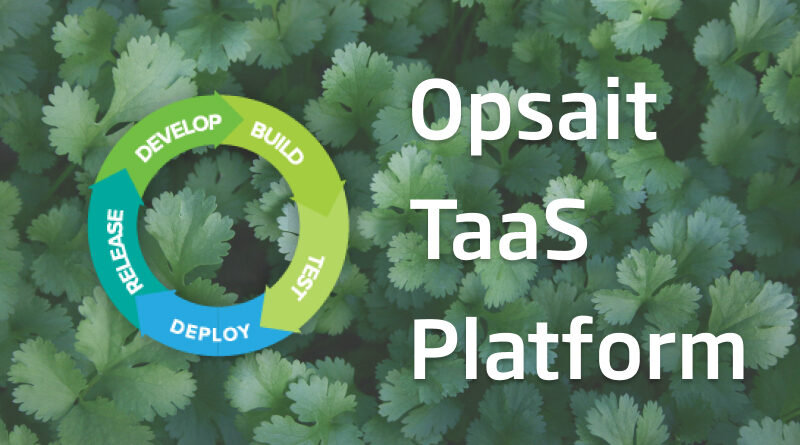Test automation with Minsait Cilantrum
As of version 3.3.1-Moonwalker of Onesait Platform, we have incorporated into our Platform quality procedure the automation process that uses the«Opsait TaaS Platform» solution, based on the Minsait test automation framework: Cilantrum.

Benefits of automationBeneficios de la automatización
The automatic test procedure provides the following advantages:
- Reduction of time and effort in the execution of the tests.
- Support in increasing the performance of test passes, as more time is available.
- It facilitates the detection of errors more quickly.
- Makes it easy to implement continuous integration.
- It allows the execution of a large number of complex tests in each release, obtaining a coverage impossible to achieve with manual tests.
- It allows real-time monitoring of the executions, visualizing the progress of executed cases and their different results.
- Automation of different test plans in all Platform environments.
What is the procedure for test automation?
For each release of the Platform that is carried out, we execute a test pass in which the functionalities that are going to be incorporated will be analyzed, and a set of tests will be defined for each one of them. We will select those that are candidates to automate and build a specific test package.
Once the automation is implemented by the team, those functionalities will be available to incorporate them into the test plans of the «Opsait TaaS Platform» solution.
How do we configure our test plan and carry out its execution?
Introduction to the TaaS Platform
TaaS Platform is Minsait’s solution for the management and execution of automatic tests in a Cloud environment. It has a web application through which all the procedures associated with it are carried out.
Previous configuration
Within the main screen of the TaaS Platform, we will find our «Test Plan» with all the tests that have been automated so far, plus the result of the last execution.
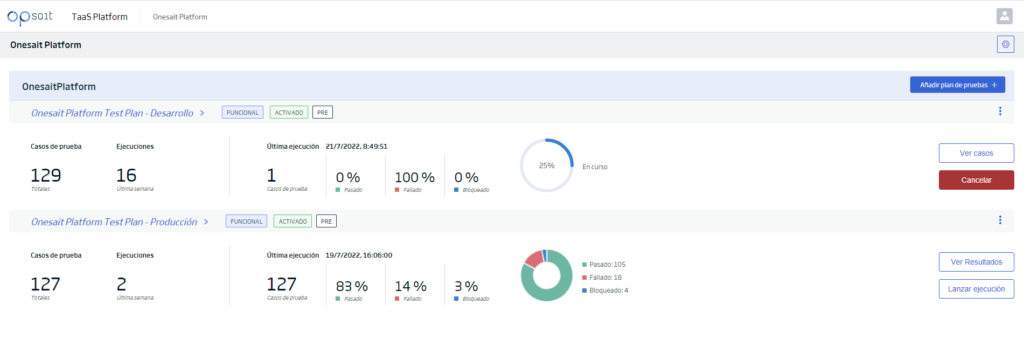
We have previously made the initial configuration.
In the application settings, we can create as many environments as we want. In our casem the PRE environment has been created:

In the Test Plan settings, we will configure our repository, the devices where we will run the automated tests, and the language to use:
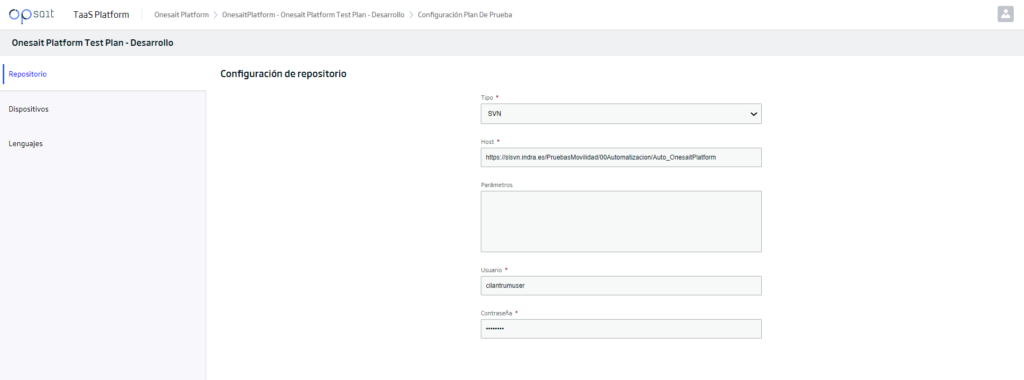
To add the test cases of each test suite of the Platform, we will use the Test Plan in the «Test Data» tab:


Programming and execution
Once we have everything ready, we proceed to the programming of the tests, indicating when they will be executed. To do this, within the «Execution Properties» tab in the Test Plan, we can configure the coverage, which suites we want to add, the type of report or the weekly schedule.
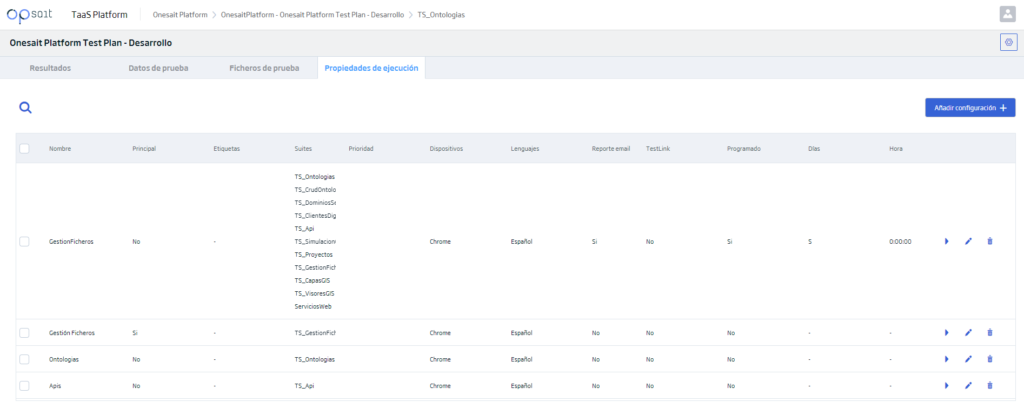
Results report
Having launched the test automation, we will be able to see the progress of the execution in real time. To query the results, a report will be generated with the details of the states of each suite, screenshots of the executions, and the execution time elapsed in each one of them.
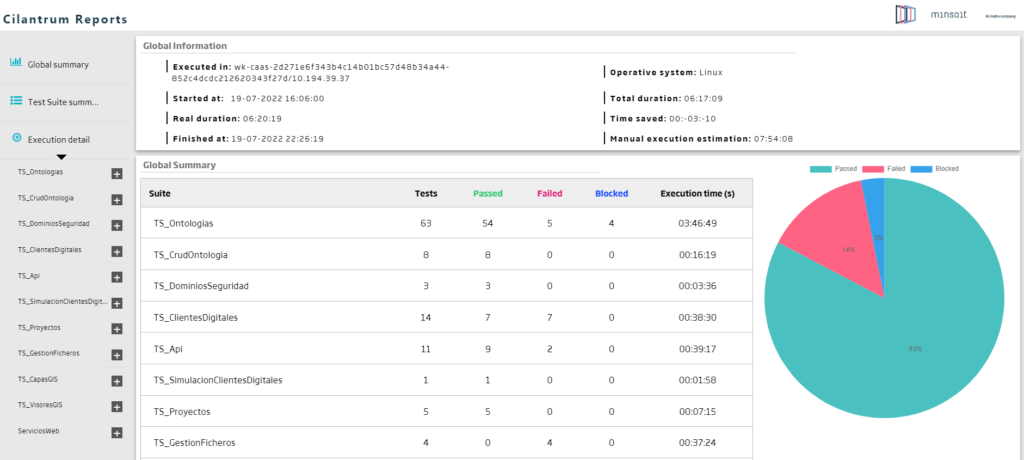
We also have the option of consulting the history of executions to compare them with each other, and to check the evolution of the resolution of defects.
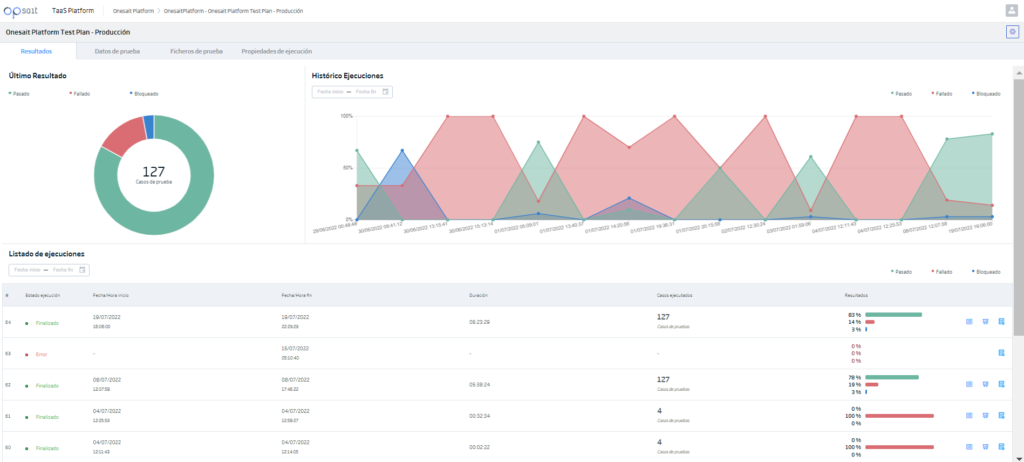
In conclusion, it should be noted that, with the Opsait TaaS Platform automation tool, we will be able to benefit, in the short term, from time and cost savings in the execution of tests, thus guaranteeing a faster detection and resolution of defects, a better analysis of the functionalities of the Platform and ultimately an improvement in the quality of the software.
Header image: Phillip Larking at Unsplash

